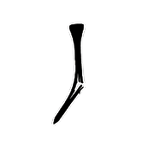The Spine of Your Golf Game
2 minAre you kidding? Are you trying to irritate us with that nonsense?
The sad truth is that tour players are being completely honest in these situations. They are able to shoot amazing scores despite not having their best stuff. How? The world's best players all have four essential elements in their games that they can rely on to still play decently and score well – even when they're not in top form.
In this video, Titleist staff member Justin Parsons details these four crucial elements. And the good news? You can develop them, as well, to create what Justin calls "a strong spine" for your golf game.
1. Mental Game - This is one of the first things Justin look at in evaluating new students. Can you think clearly under pressure? Do you have the discipline to create good routines and processes? Are you resilient when you're faced with bad breaks? Do you trust yourself and are you confident in testing yourself, taking risks? Can you forget poor shots, keep your emotions in check and focus on the shot at hand? These are all important ingredients in a strong mental game. The importance of the mental game can't be overstated - and it can be trained!
2. Ability to Keep the Ball in Play. You can't score from out-of-bounds. As you work on your swing, it's important to develop a go-to shot. It doesn't have to be powerful. It doesn't have to be pretty. It just has to be predictable, a shot that you can rely on when all else fails.
3. A Solid, Stable Short Game - Becoming proficient within 35-40 yards of the green does not require great athletic ability. It requires skill, and that can be greatly improved with sufficient practice and emphasis. Taking your short game to the next level will save you more strokes than almost anything else you can do.
4. Putting - The object of the game is to get the ball in the hole. This is why Tour players practice putting more than any other phase of their games. Be mindful in your approach. Work on your green reading, your distance control, the squareness of your putter face at impact. Practice randomly, and use games and wagers to practice under pressure. When you're not hitting it well, good putting will turn a bad round into a good one. And when your ball-striking is on, it will turn a good round into one you'll never forget.
Focus on Justin's four building blocks and you'll start developing a solid game that will serve you well, even on those days when you don't have your "A" game.

























